Editorial Wild Oats
A Gentleman Abroad
Joan of Arc or Personal Recollections of Joan of Arc
Life on the Mississippi: New York: Harper
and Brothers Publishers, 1902. Flyleaf inscription: “Ed Burroughs, Salt
Lake City, Utah, October 1904.”
Personal Recollections of Joan of Arc
Roughing It
The original plan was to drive from SanFrancisco
to Carson City in the few hours it is meant to now take and spend the afternoon
wandering around the general area where Samuel Clemens became Mark Twain.
Clemens was 25 years old in the summer of 1861 when he first went west
with his older brother Orion. He'd fought briefly and badly for the Confederate
army and was saved, in a way, by his older brother, who had campaigned
for
Abraham Lincoln and been rewarded with
a job as secretary of the Nevada Territory. When the Clemenses boarded
the stagecoach in St. Joe, Mo., for Carson City, Nev., they were each permitted
25 pounds of baggage. Both were forced to abandon possessions, but the
Unabridged Dictionary somehow made the cut. Or so Twain claimed, 10 years
later, in Roughing It. As a writer, Twain was lucky in many ways, and one
of them was that he died before the birth of the fact-checker. He ingeniously
set up the Unabridged as an unpleasant traveling companion on a hellish
journey, just as he ingeniously played up his encounters with gunslingers,
desperadoes, Indians, deserts, wild beasts, and bad weather. Writing for
an audience already a little vague about the Wild West—between his going
and writing about it the stagecoach had been replaced by the railroad—Twain
clearly sensed that
a gap had opened up between what was believable
and what was true, and he made the most of it.
Mark Twain's Boyhood Home
The
Prince and the Pauper
The
Stolen White Elephantetc. Boston: James R.
Osgood and Company, 1883.
Flyleaf inscription: “Edgar Rice Burroughs, 646 Washington Blvd., Chicago,
Il.”
Tom Sawyer ~ also Tom Sawyer Stories
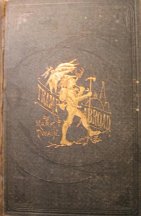 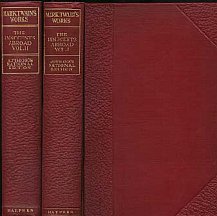 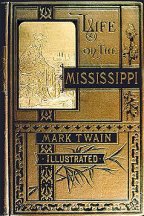 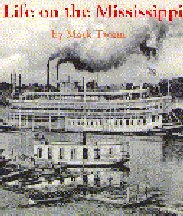
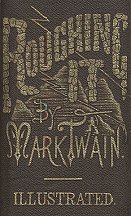 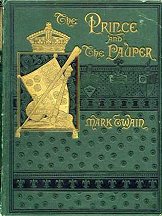 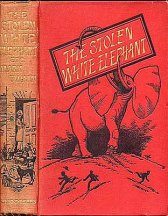 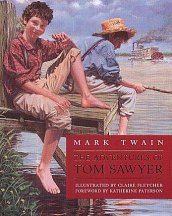 OTHER
OTHER
A
Tramp Abroad ~ 1879 ~ American
Publishing Co., Hartford, Conn. 328 illustrations by various artists and
the author himself. 580 pages additional 50 page Appendix
Innocents
Abroad ~ Harper & Brothers; NY: 1899 ~ 823 pages (see a possible
Missing
Passage from Innocents Abroad)
Extracts
from Eve's Diary
Extracts
from Adam's Diary
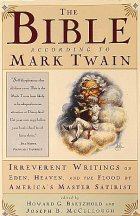 THE
BIBLE ACCORDING TO MARK TWAIN. edited by Howard G. Baetzhold & Joseph
B. McCullough.1995 University of Georgia Press. In this brilliant and hilarious
compilation of essays, letters, diaries, and excerpts - some never before
published - Mark Twain takes on Heaven and Hell, sinners and saints and
showcases his own unique approach to the Holy Scriptures including Adam
and Eve's divergent accounts of their domestic troubles, Satan's take on
our concept of the afterlife, Methuselah's discussion of an ancient version
of baseball, and advice on how to dress and tip properly in heaven. Behind
the humor of these pieces, readers will see Twain's serious thoughts on
the relationship between God and man, biblical inconsistencies, Darwinism,
science, and the impact of technology on religious beliefs. THE
BIBLE ACCORDING TO MARK TWAIN. edited by Howard G. Baetzhold & Joseph
B. McCullough.1995 University of Georgia Press. In this brilliant and hilarious
compilation of essays, letters, diaries, and excerpts - some never before
published - Mark Twain takes on Heaven and Hell, sinners and saints and
showcases his own unique approach to the Holy Scriptures including Adam
and Eve's divergent accounts of their domestic troubles, Satan's take on
our concept of the afterlife, Methuselah's discussion of an ancient version
of baseball, and advice on how to dress and tip properly in heaven. Behind
the humor of these pieces, readers will see Twain's serious thoughts on
the relationship between God and man, biblical inconsistencies, Darwinism,
science, and the impact of technology on religious beliefs.
It is full of interest. It has noble poetry
in it; and some clever fables; and some blood-drenched history; and some
good morals; and a wealth of obscenity; and upwards of a thousand lies.
- Letters from the Earth
The two Testaments are interesting, each
in its own way. The Old one gives us a picture of these people's Deity
as he was before he got religion, the other one gives us a picture of him
as he appeared afterward.
- Letters from the Earth
The Christian's Bible is a drug store.
Its contents remain the same; but the medical practice changes...The world
has corrected the Bible. The church never corrects it; and also never fails
to drop in at the tail of the procession- and take the credit of the correction.
During many ages there were witches. The Bible said so. the Bible commanded
that they should not be allowed to live. Therefore the Church, after eight
hundred years, gathered up its halters, thumb-screws, and firebrands, and
set about its holy work in earnest. She worked hard at it night and day
during nine centuries and imprisoned, tortured, hanged, and burned whole
hordes and armies of witches, and washed the Christian world clean with
their foul blood.
Then it was discovered that there was
no such thing as witches, and never had been. One does not know whether
to laugh or to cry.....There are no witches. The witch text remains; only
the practice has changed. Hell fire is gone, but the text remains. Infant
damnation is gone, but the text remains. More than two hundred death penalties
are gone from the law books, but the texts that authorized them remain.
- "Bible Teaching and Religious Practice,"
Europe and Elsewhere
When one reads Bibles, one is less surprised
at what the Deity knows than at what He doesn't know.
- Mark Twain's Notebook
|
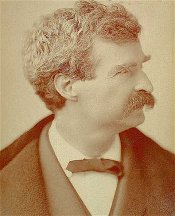 Mark
Twain (pseudonym of Samuel Taylor Clemens, 1835-1910), was an American
writer, journalist and humorist, who won a worldwide audience for his stories
of the youthful adventures of Tom Sawyer and Huckleberry Finn. Clemens
was born on November 30, 1835 in Florida, Missouri, of a Virginian family.
He was brought up in Hannibal, Missouri. After his father's death in 1847,
he was apprenticed to a printer and wrote for his brother's newspaper.
He later worked as a licensed Mississippi river-boat pilot. The Civil War
put an end to the steamboat traffic and Clemens moved to Virginia City,
where he edited the Territorial Enterprise. On February 3, 1863, 'Mark
Twain' was born when Clemens signed a humorous travel account with that
pseudonym. In 1864 Twain left for California, and worked in San Francisco
as a reporter. He visited Hawaii as a correspondent for The Sacramento
Union, publishing letters on his trip and giving lectures. He set out on
a world tour, traveling in France and Italy. His experiences were recorded
in 1869 in The Innocents Abroad, which gained him wide popularity, and
poked fun at both American and European prejudices and manners. The success
as a writer gave Twain enough financial security to marry Olivia Langdon
in 1870. They moved next year to Hartford. Twain continued to lecture in
the United States and England. Between 1876 and 1884 he published several
masterpieces, Tom Sawyer (1881) and The Prince And The Pauper (1881). Life
On The Mississippi appeared in 1883 and Huckleberry Finn in 1884. In the
1890s Twain lost most of his earnings in financial speculations and in
the failure of his own publishing firm. To recover from the bankruptcy,
he started a world lecture tour, during which one of his daughters died.
Twain toured New Zealand, Australia, India, and South Africa. He wrote
such books as The Tragedy Of Pudd'head Wilson (1884), Personal Recollections
Of Joan Of Arc (1885), A Connecticut Yankee in King Arthur's Court (1889)
and the travel book Following The Equator (1897). During his long writing
career, Twain also produced a considerable number of essays. The death
of his wife and his second daughter darkened the author's later years,
which is seen in his posthumously published autobiography (1924). Twain
died on April 21, 1910. Mark
Twain (pseudonym of Samuel Taylor Clemens, 1835-1910), was an American
writer, journalist and humorist, who won a worldwide audience for his stories
of the youthful adventures of Tom Sawyer and Huckleberry Finn. Clemens
was born on November 30, 1835 in Florida, Missouri, of a Virginian family.
He was brought up in Hannibal, Missouri. After his father's death in 1847,
he was apprenticed to a printer and wrote for his brother's newspaper.
He later worked as a licensed Mississippi river-boat pilot. The Civil War
put an end to the steamboat traffic and Clemens moved to Virginia City,
where he edited the Territorial Enterprise. On February 3, 1863, 'Mark
Twain' was born when Clemens signed a humorous travel account with that
pseudonym. In 1864 Twain left for California, and worked in San Francisco
as a reporter. He visited Hawaii as a correspondent for The Sacramento
Union, publishing letters on his trip and giving lectures. He set out on
a world tour, traveling in France and Italy. His experiences were recorded
in 1869 in The Innocents Abroad, which gained him wide popularity, and
poked fun at both American and European prejudices and manners. The success
as a writer gave Twain enough financial security to marry Olivia Langdon
in 1870. They moved next year to Hartford. Twain continued to lecture in
the United States and England. Between 1876 and 1884 he published several
masterpieces, Tom Sawyer (1881) and The Prince And The Pauper (1881). Life
On The Mississippi appeared in 1883 and Huckleberry Finn in 1884. In the
1890s Twain lost most of his earnings in financial speculations and in
the failure of his own publishing firm. To recover from the bankruptcy,
he started a world lecture tour, during which one of his daughters died.
Twain toured New Zealand, Australia, India, and South Africa. He wrote
such books as The Tragedy Of Pudd'head Wilson (1884), Personal Recollections
Of Joan Of Arc (1885), A Connecticut Yankee in King Arthur's Court (1889)
and the travel book Following The Equator (1897). During his long writing
career, Twain also produced a considerable number of essays. The death
of his wife and his second daughter darkened the author's later years,
which is seen in his posthumously published autobiography (1924). Twain
died on April 21, 1910.
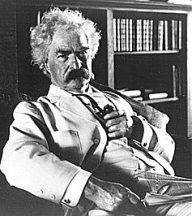 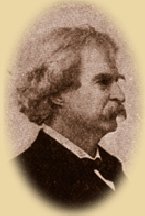 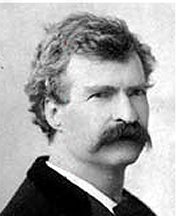
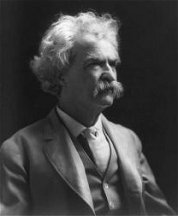 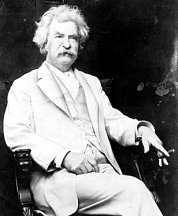
Samuel Langhorne Clemens: (Born: November 30, 1835 Died: April
1910) was born in Florida, Missouri, and later moved with his family
to Hannibal, Missouri, where he grew up. Although he had a number of odd
jobs early in his life, Clemens is best known as a writer who took the
pen name of Mark Twain about five years after he published his first major
work. Twain was a traveling journalist, humorist, writer, and lecturer
whose most famous novels are The Adventures of Tom Sawyer and The Adventures
of Huckleberry Finn. His childhood in Hannibal along the Mississippi River
inspired colorful tales of adventures on the waterway. Twain traveled around
the world and he dazzled audiences far and wide with lectures filled with
the same humor and spirit found in his writings.
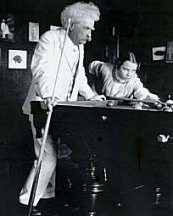 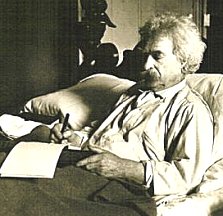 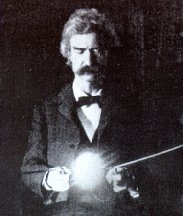
Other References:
Mark Twain Quotes Site |

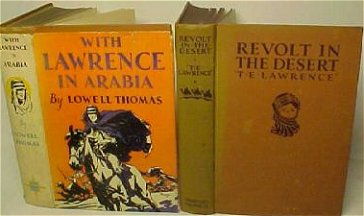
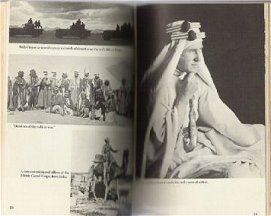
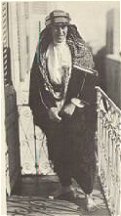
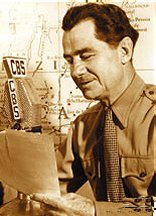 Lowell
Thomas was a man ahead of his time: the first roving newscaster, a
film maker through the 1920s, a radio presenter in the 1930s, an adventurer
who wrote more than 50 books, he was heralded as the father of 'Cinerama'.
Born in 1892, Lowell Thomas started out as a reporter for the Chicago Evening
Journal. He had a flair for making ordinary stories exciting. Inspired
by the growing art of documentary film, Thomas dreamed of filming the war
in Europe. He raised $50,000 from Chicago businessmen and headed for France
accompanied by his wife and a talented cameraman, Harry Chase.Depressed
by the brutality of the war on the Western Front Thomas and Chase set off
for the Middle East. They arrived in time to film General Allenby's historic
entry in to Jerusalem. While in Jerusalem they met the man who was to make
them famous, a diminutive British officer in a borrowed uniform called
Captain Lawrence. Lawrence was allegedly introduced to Thomas as the 'Uncrowned
King of Arabia'. Thomas and Chase were invited to Feisal's desert camp
where they shot moving and still pictures of Lawrence with the Arabs. Later
both men were to dispute how long the filming had taken, Thomas claiming
it was a few weeks, Lawrence said it was only days. Lawrence later claimed
he had been "tricked" into being filmed and photographed; Thomas said he
had been a willing model. Nonetheless, the images of Lawrence in Arabia
captivated a public exhausted by the horrors of the 'war to end all wars'.The
romantic and adventurous tales of this "mysterious blue eyed Arab in the
garb of a prince wandering the streets" were an instant hit. Lowell Thomas'
screen show showed to packed audiences in New York and then London. Thomas'
planned London run of two weeks was extended and ran for six months. There
was even a Royal Command Performance. Allenby turned up to a standing ovation
and Thomas later claimed that even Lawrence had sneaked in for a viewing.The
show went on to Australia, New Zealand, South-East Asia, India and Canada.
Over four million people saw it, making Thomas millions of dollars and
turning Lawrence into a movie star. Lawrence at once loved and hated fame
and never forgave Thomas for exploiting his image, calling him a 'vulgar
man'.When asked about Lawrence's aversion to celebrity Lowell Thomas quoted
an old Turkish saying, "He had a genius for backing into the limelight".
Thomas went on to live an adventurous life, making many more films and
radio broadcasts. He was also the first man to film the Dalai Lama in Tibet.
Thomas died in 1981 in New York at the age of 89.
Lowell
Thomas was a man ahead of his time: the first roving newscaster, a
film maker through the 1920s, a radio presenter in the 1930s, an adventurer
who wrote more than 50 books, he was heralded as the father of 'Cinerama'.
Born in 1892, Lowell Thomas started out as a reporter for the Chicago Evening
Journal. He had a flair for making ordinary stories exciting. Inspired
by the growing art of documentary film, Thomas dreamed of filming the war
in Europe. He raised $50,000 from Chicago businessmen and headed for France
accompanied by his wife and a talented cameraman, Harry Chase.Depressed
by the brutality of the war on the Western Front Thomas and Chase set off
for the Middle East. They arrived in time to film General Allenby's historic
entry in to Jerusalem. While in Jerusalem they met the man who was to make
them famous, a diminutive British officer in a borrowed uniform called
Captain Lawrence. Lawrence was allegedly introduced to Thomas as the 'Uncrowned
King of Arabia'. Thomas and Chase were invited to Feisal's desert camp
where they shot moving and still pictures of Lawrence with the Arabs. Later
both men were to dispute how long the filming had taken, Thomas claiming
it was a few weeks, Lawrence said it was only days. Lawrence later claimed
he had been "tricked" into being filmed and photographed; Thomas said he
had been a willing model. Nonetheless, the images of Lawrence in Arabia
captivated a public exhausted by the horrors of the 'war to end all wars'.The
romantic and adventurous tales of this "mysterious blue eyed Arab in the
garb of a prince wandering the streets" were an instant hit. Lowell Thomas'
screen show showed to packed audiences in New York and then London. Thomas'
planned London run of two weeks was extended and ran for six months. There
was even a Royal Command Performance. Allenby turned up to a standing ovation
and Thomas later claimed that even Lawrence had sneaked in for a viewing.The
show went on to Australia, New Zealand, South-East Asia, India and Canada.
Over four million people saw it, making Thomas millions of dollars and
turning Lawrence into a movie star. Lawrence at once loved and hated fame
and never forgave Thomas for exploiting his image, calling him a 'vulgar
man'.When asked about Lawrence's aversion to celebrity Lowell Thomas quoted
an old Turkish saying, "He had a genius for backing into the limelight".
Thomas went on to live an adventurous life, making many more films and
radio broadcasts. He was also the first man to film the Dalai Lama in Tibet.
Thomas died in 1981 in New York at the age of 89.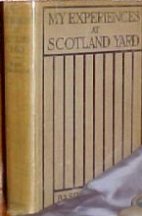
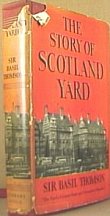
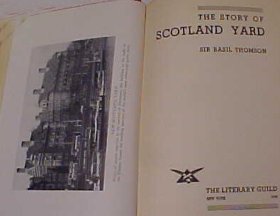
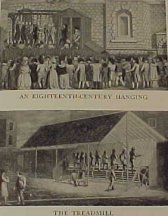
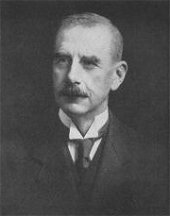 Basil Thomson
(1861 - 1939) Superintendent of Metropolitan Police and Director of Scotland
Yard's Special Branch: The son of Archbishop William
Thomson of York, England, Basil Thomson was educated at Eton and Oxford,
becoming a lawyer before joining the colonial service. He served in Fiji
and Tonga where he was briefly the Prime Minister. After returning to England,
in 1896, Thomson was appointed governor of Dartmoor and Wormwood Scrubs
prisons where some of England's most infamous prisoners were jailed.
In 1913, Thomson was named chief of the Criminal Investigation Department
at Scotland Yard. At that time the Yard's Special Branch also fell under
his supervision. During World War I, he worked with Vernon Kell's MI5,
as Special Branch had the only authority to arrest spies on behalf of British
counterintelligence. He was responsible for the arrest and jailing of German
spies rooted out by MI5, including Karl Ernst and Karl Hans Lody.
It was Thomson who boarded the Dutch liner Noordam carrying German spymaster
Franz von Rintelen, arresting him and removing him to prison, on a tip
from Reginald Hall's naval intelligence, which had intercepted an Abwehr
coded message and determined the spy would be on the vessel. Thomson's
reputation as a spycatcher was such that Mata Hari came to see him when
passing through London to learn if Special Branch really knew that she
was a German spy. Thomson, in his interview with her, guessed as much and
warned her to "quit the dangerous business" in which she was involved,
advice she never took. Had she, Mata Hari might not have faced a French
firing squad a short time later Because of his superlative
work with Special Branch in World War I, Thomson was knighted in 1918.
He retired in 1921, and died in March 1939, not living to see Special Branch
perform its outstanding counterintelligence work in World War II and throughout
the Cold War.
Basil Thomson
(1861 - 1939) Superintendent of Metropolitan Police and Director of Scotland
Yard's Special Branch: The son of Archbishop William
Thomson of York, England, Basil Thomson was educated at Eton and Oxford,
becoming a lawyer before joining the colonial service. He served in Fiji
and Tonga where he was briefly the Prime Minister. After returning to England,
in 1896, Thomson was appointed governor of Dartmoor and Wormwood Scrubs
prisons where some of England's most infamous prisoners were jailed.
In 1913, Thomson was named chief of the Criminal Investigation Department
at Scotland Yard. At that time the Yard's Special Branch also fell under
his supervision. During World War I, he worked with Vernon Kell's MI5,
as Special Branch had the only authority to arrest spies on behalf of British
counterintelligence. He was responsible for the arrest and jailing of German
spies rooted out by MI5, including Karl Ernst and Karl Hans Lody.
It was Thomson who boarded the Dutch liner Noordam carrying German spymaster
Franz von Rintelen, arresting him and removing him to prison, on a tip
from Reginald Hall's naval intelligence, which had intercepted an Abwehr
coded message and determined the spy would be on the vessel. Thomson's
reputation as a spycatcher was such that Mata Hari came to see him when
passing through London to learn if Special Branch really knew that she
was a German spy. Thomson, in his interview with her, guessed as much and
warned her to "quit the dangerous business" in which she was involved,
advice she never took. Had she, Mata Hari might not have faced a French
firing squad a short time later Because of his superlative
work with Special Branch in World War I, Thomson was knighted in 1918.
He retired in 1921, and died in March 1939, not living to see Special Branch
perform its outstanding counterintelligence work in World War II and throughout
the Cold War. 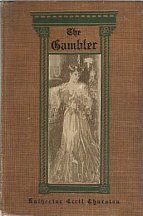
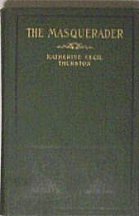
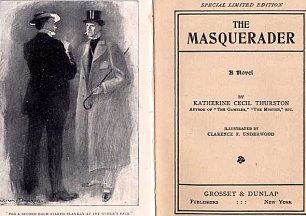
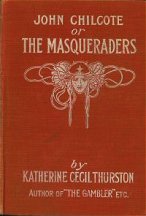
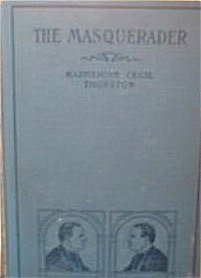
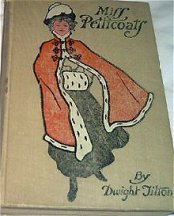
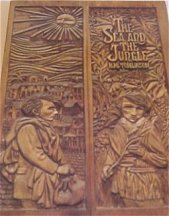 The Sea
and the Jungle ~ 1920 ~ NY: E. P. Dutton ~ 1912 ~ Illustrated
with sixteen woodcuts by Clare Leighton.
The Sea
and the Jungle ~ 1920 ~ NY: E. P. Dutton ~ 1912 ~ Illustrated
with sixteen woodcuts by Clare Leighton.
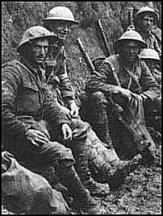 Henry
Major Tomlinson, eldest son of Henry Tomlinson and Emily Major, was
born in Poplar, London, on 21st June 1873. His father was a foreman in
the West India Dock and as a boy Tomlinson developed a strong interest
in ships. After an education at the local school, Tomlinson worked as a
clerk in a shipping office. Henry Tomlinson had died in 1886 and the family
was dependent on the six shillings he received for his labours. In the
evenings Tomlinson continued his education by studying geology, botany,
mineralogy and zoology. Tomlinson began contributing material to the Morning
Leader and in 1904 he was employed as a full-time reporter for the newspaper.
Tomlinson specialized in articles on ships and travelling. Ernest Peake,
the editor, sent him on several trips including sailing 2,000 miles up
the Amazon. His first book, The Sea and the Jungle (1912) was immediately
identified as a classic. Despite the success of The Sea and the Jungle,
Tomlinson continued to work as a journalist. A leader-writer for the Daily
News, Tomlinson was sent to France on the outbreak of the First World War.
Soon afterwards he was recruited by the British Army as its official war
correspondent.
Henry
Major Tomlinson, eldest son of Henry Tomlinson and Emily Major, was
born in Poplar, London, on 21st June 1873. His father was a foreman in
the West India Dock and as a boy Tomlinson developed a strong interest
in ships. After an education at the local school, Tomlinson worked as a
clerk in a shipping office. Henry Tomlinson had died in 1886 and the family
was dependent on the six shillings he received for his labours. In the
evenings Tomlinson continued his education by studying geology, botany,
mineralogy and zoology. Tomlinson began contributing material to the Morning
Leader and in 1904 he was employed as a full-time reporter for the newspaper.
Tomlinson specialized in articles on ships and travelling. Ernest Peake,
the editor, sent him on several trips including sailing 2,000 miles up
the Amazon. His first book, The Sea and the Jungle (1912) was immediately
identified as a classic. Despite the success of The Sea and the Jungle,
Tomlinson continued to work as a journalist. A leader-writer for the Daily
News, Tomlinson was sent to France on the outbreak of the First World War.
Soon afterwards he was recruited by the British Army as its official war
correspondent.
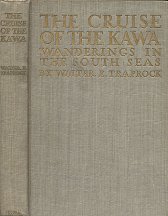
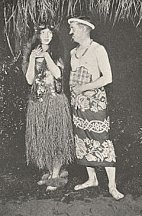
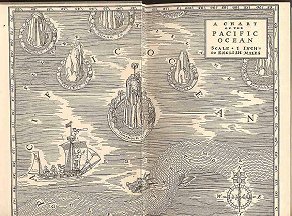
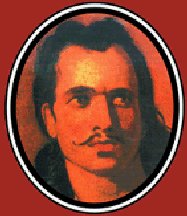 Edward
John Trelawny (1792–1881). An English author and adventurer. Trelawny
was a handsome, dashing, and quixotic personality from an old and famous
Cornish family. He was brought up in London and went to a school in Bristol,
from which he ran away. He passed a miserable childhood, and at the age
of thirteen was enrolled by his father in the British navy. Discharged
without a commission after a decade, Trelawny found his way to Italy, where
he became part of the circle of expatriates around Byron and Shelley. He
fought in the Greek War of Independence, during which he survived an assassination
attempt, and wrote a notoriously unreliable but enormously successful autobiography,
Adventures
of a Younger Son, as well as his celebrated reminiscences of Shelley
and Byron. Trelawny is buried beside Shelley in the English Cemetery in
Rome.
Edward
John Trelawny (1792–1881). An English author and adventurer. Trelawny
was a handsome, dashing, and quixotic personality from an old and famous
Cornish family. He was brought up in London and went to a school in Bristol,
from which he ran away. He passed a miserable childhood, and at the age
of thirteen was enrolled by his father in the British navy. Discharged
without a commission after a decade, Trelawny found his way to Italy, where
he became part of the circle of expatriates around Byron and Shelley. He
fought in the Greek War of Independence, during which he survived an assassination
attempt, and wrote a notoriously unreliable but enormously successful autobiography,
Adventures
of a Younger Son, as well as his celebrated reminiscences of Shelley
and Byron. Trelawny is buried beside Shelley in the English Cemetery in
Rome.








 THE
BIBLE ACCORDING TO MARK TWAIN. edited by Howard G. Baetzhold & Joseph
B. McCullough.1995 University of Georgia Press. In this brilliant and hilarious
compilation of essays, letters, diaries, and excerpts - some never before
published - Mark Twain takes on Heaven and Hell, sinners and saints and
showcases his own unique approach to the Holy Scriptures including Adam
and Eve's divergent accounts of their domestic troubles, Satan's take on
our concept of the afterlife, Methuselah's discussion of an ancient version
of baseball, and advice on how to dress and tip properly in heaven. Behind
the humor of these pieces, readers will see Twain's serious thoughts on
the relationship between God and man, biblical inconsistencies, Darwinism,
science, and the impact of technology on religious beliefs.
THE
BIBLE ACCORDING TO MARK TWAIN. edited by Howard G. Baetzhold & Joseph
B. McCullough.1995 University of Georgia Press. In this brilliant and hilarious
compilation of essays, letters, diaries, and excerpts - some never before
published - Mark Twain takes on Heaven and Hell, sinners and saints and
showcases his own unique approach to the Holy Scriptures including Adam
and Eve's divergent accounts of their domestic troubles, Satan's take on
our concept of the afterlife, Methuselah's discussion of an ancient version
of baseball, and advice on how to dress and tip properly in heaven. Behind
the humor of these pieces, readers will see Twain's serious thoughts on
the relationship between God and man, biblical inconsistencies, Darwinism,
science, and the impact of technology on religious beliefs.
 Mark
Twain (pseudonym of Samuel Taylor Clemens, 1835-1910), was an American
writer, journalist and humorist, who won a worldwide audience for his stories
of the youthful adventures of Tom Sawyer and Huckleberry Finn. Clemens
was born on November 30, 1835 in Florida, Missouri, of a Virginian family.
He was brought up in Hannibal, Missouri. After his father's death in 1847,
he was apprenticed to a printer and wrote for his brother's newspaper.
He later worked as a licensed Mississippi river-boat pilot. The Civil War
put an end to the steamboat traffic and Clemens moved to Virginia City,
where he edited the Territorial Enterprise. On February 3, 1863, 'Mark
Twain' was born when Clemens signed a humorous travel account with that
pseudonym. In 1864 Twain left for California, and worked in San Francisco
as a reporter. He visited Hawaii as a correspondent for The Sacramento
Union, publishing letters on his trip and giving lectures. He set out on
a world tour, traveling in France and Italy. His experiences were recorded
in 1869 in The Innocents Abroad, which gained him wide popularity, and
poked fun at both American and European prejudices and manners. The success
as a writer gave Twain enough financial security to marry Olivia Langdon
in 1870. They moved next year to Hartford. Twain continued to lecture in
the United States and England. Between 1876 and 1884 he published several
masterpieces, Tom Sawyer (1881) and The Prince And The Pauper (1881). Life
On The Mississippi appeared in 1883 and Huckleberry Finn in 1884. In the
1890s Twain lost most of his earnings in financial speculations and in
the failure of his own publishing firm. To recover from the bankruptcy,
he started a world lecture tour, during which one of his daughters died.
Twain toured New Zealand, Australia, India, and South Africa. He wrote
such books as The Tragedy Of Pudd'head Wilson (1884), Personal Recollections
Of Joan Of Arc (1885), A Connecticut Yankee in King Arthur's Court (1889)
and the travel book Following The Equator (1897). During his long writing
career, Twain also produced a considerable number of essays. The death
of his wife and his second daughter darkened the author's later years,
which is seen in his posthumously published autobiography (1924). Twain
died on April 21, 1910.
Mark
Twain (pseudonym of Samuel Taylor Clemens, 1835-1910), was an American
writer, journalist and humorist, who won a worldwide audience for his stories
of the youthful adventures of Tom Sawyer and Huckleberry Finn. Clemens
was born on November 30, 1835 in Florida, Missouri, of a Virginian family.
He was brought up in Hannibal, Missouri. After his father's death in 1847,
he was apprenticed to a printer and wrote for his brother's newspaper.
He later worked as a licensed Mississippi river-boat pilot. The Civil War
put an end to the steamboat traffic and Clemens moved to Virginia City,
where he edited the Territorial Enterprise. On February 3, 1863, 'Mark
Twain' was born when Clemens signed a humorous travel account with that
pseudonym. In 1864 Twain left for California, and worked in San Francisco
as a reporter. He visited Hawaii as a correspondent for The Sacramento
Union, publishing letters on his trip and giving lectures. He set out on
a world tour, traveling in France and Italy. His experiences were recorded
in 1869 in The Innocents Abroad, which gained him wide popularity, and
poked fun at both American and European prejudices and manners. The success
as a writer gave Twain enough financial security to marry Olivia Langdon
in 1870. They moved next year to Hartford. Twain continued to lecture in
the United States and England. Between 1876 and 1884 he published several
masterpieces, Tom Sawyer (1881) and The Prince And The Pauper (1881). Life
On The Mississippi appeared in 1883 and Huckleberry Finn in 1884. In the
1890s Twain lost most of his earnings in financial speculations and in
the failure of his own publishing firm. To recover from the bankruptcy,
he started a world lecture tour, during which one of his daughters died.
Twain toured New Zealand, Australia, India, and South Africa. He wrote
such books as The Tragedy Of Pudd'head Wilson (1884), Personal Recollections
Of Joan Of Arc (1885), A Connecticut Yankee in King Arthur's Court (1889)
and the travel book Following The Equator (1897). During his long writing
career, Twain also produced a considerable number of essays. The death
of his wife and his second daughter darkened the author's later years,
which is seen in his posthumously published autobiography (1924). Twain
died on April 21, 1910.
















